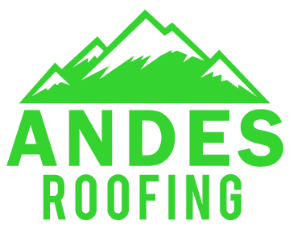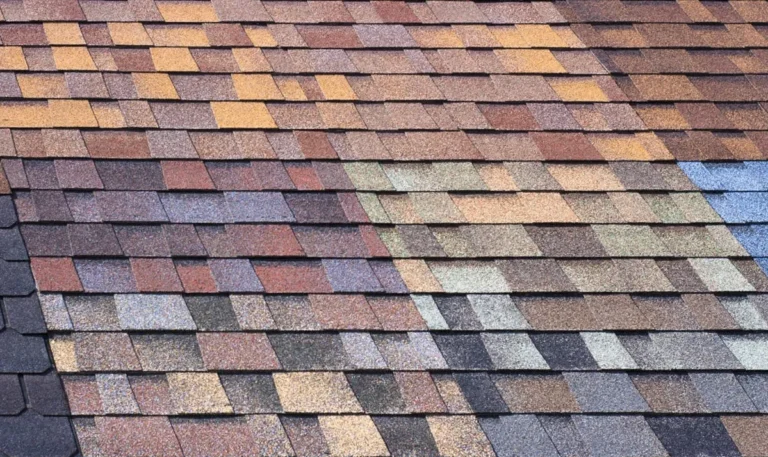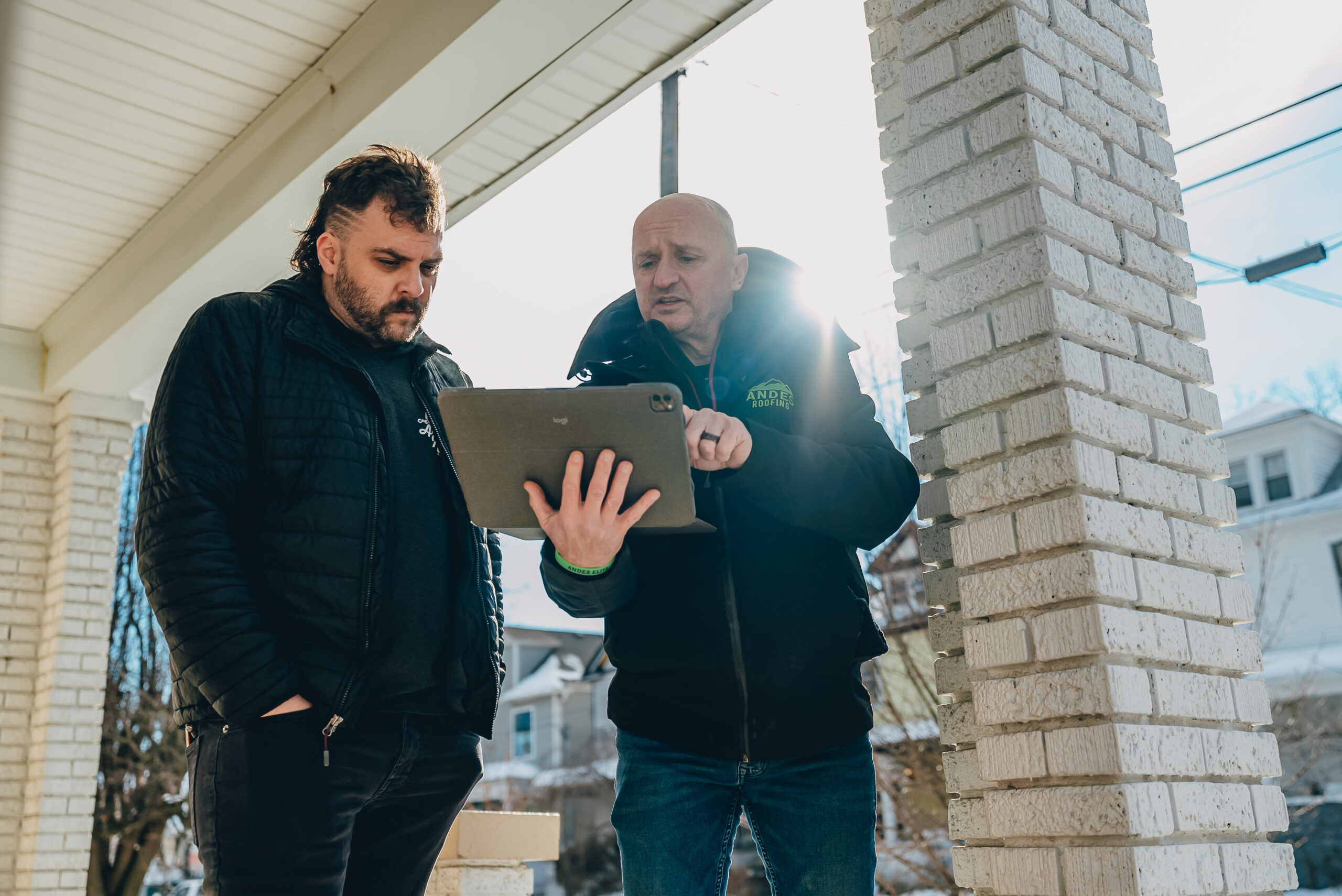Have you ever gotten a blister on your ankle when wearing a new pair of shoes? Ouch, right? Blisters are no fun, especially when they pop.
Believe it or not, our roofs can also develop blisters. And they can pop! Roof blistering is a clear sign of roof damage that must be addressed right away before the damage worsens. We’ll be taking a look at everything you need to know about roof blisters, including:
- What they look like
- The difference between roof blisters and hail damage
- The typical causes
- How to fix the blisters
- How to prevent them from occurring
What Are Asphalt Shingle Blisters?

Roof blistering happens when asphalt shingles come loose from the felt underlayment or when moisture gets trapped in between the layers of the shingle. This creates pockets that result in an uneven surface on your roof. It starts as a cosmetic issue— until the blisters pop.
When the blisters pop, the protective granules on the surface of the shingles fall off, exposing the matting underneath.
To understand why this is an issue, we must first understand the role that shingle granules play.
- Shingle granules are the sand-like material that forms the outermost layer of asphalt shingles.
- These granules protect against UV damage from the sun and are the first line of defense against hail and flying debris.
- When shingle granule loss occurs, your shingles are far more susceptible to damage and deterioration.
So, when a roof blister forms and pops, the granules pop off with it, leaving your shingles vulnerable to UV damage and impact damage.
The Difference Between Roof Blisters and Hail Damage
One of the main factors that can cause roof blisters to pop is hail impact. Foot traffic and falling debris can also contribute. Hail damage on asphalt shingle roofs and roof blisters look similar, but they’re different types of damage.
Hail damage (separate from blisters) leaves divots that look jagged and uneven. Some shingle granules will likely be knocked off, but it won’t be an entire uniform dent.
Popped roof blisters look like pockmarks with a slightly raised edge around the divot. Plus, the entire divot will be bald, and you’ll be able to see the matting.
What Causes Roof Blistering?
Roof blistering isn’t guaranteed to happen on every roof, thankfully. So, what causes it to happen to certain roofs? There are three main factors that cause roof blisters:
1) Inadequate Attic Ventilation

Poor ventilation is the #1 cause of roof blistering. Adequate air circulation between your roof and attic helps prevent issues like:
- Built-up condensation
- Mold growth
- Rot
- Temperature imbalances
Good roof ventilation keeps your home comfortable and allows humid air to escape from the attic. If that humid air can’t escape, it pushes moisture under the shingles, which can cause blistering.
2) Installation or Manufacturing Errors
Another common cause of blistering roof shingles is improper installation or faulty manufacturing. If the shingles arrived already damaged, there isn’t much hope for them to function correctly.
Additionally, if you attempt a roof installation by yourself, or your roof was installed by an unqualified roofing contractor or neighborhood handyman, you’re likely dealing with installation errors. Without comprehensive warranties, there isn’t much you can do if this was the culprit.
3) Old Roof Age
Asphalt shingle roofs last an average of 15-25 years. Over those years, your roof takes a beating from wind, rain, hail, flying debris, and UV rays. Once your roof is over 1o years old, that wear and tear can really start to take effect.
As your roof ages, it’s more likely to develop blisters, as well as other damage.
Ways to Fix Roof Blistering
The best way to catch roof blistering before it worsens is to schedule a roof inspection at least once a year and after every major storm. A professional roofing contractor will be able to pinpoint your damage and create a game plan moving forward.
A general rule of thumb is that if the roof damage covers 1/3 of your roof or more, you’re best off getting a total roof replacement. But if the blistering is only occurring in smaller areas, you may be able to get away with repairs.
How to Prevent Roof Blistering in the Future
Since we’ll bet that you don’t want to pay for a premature roof replacement due to shingle blistering, you want to set yourself up for success to have a well-performing roof. Follow these tips to ensure your roof works as best as possible.
Hire Fully Licensed & Insured Contractors ✅
When it comes to an investment as significant as your roof, you want to be positive that it’s being handled by qualified contractors. We know it can be tempting to save a few bucks and enlist your handy neighbor or attempt a roof installation yourself, but these situations almost always lead to expensive complications down the line.
Do your research, and hire a local roofing company that’s fully licensed and insured in your state. Read online reviews and testimonials, and ask the company about their years of experience.
Work With a Company That Offers Warranties ✅
If you don’t have any warranties in place, and you ultimately end up with an issue due to improper manufacturing or installation, you’re unfortunately out of luck. Be sure to hire a roofing company that offers manufacturer and workmanship warranties. That way, you’ll be protected if something goes wrong that was someone else’s fault.
Ensure Proper Attic Ventilation and Insulation ✅
As we mentioned earlier, proper attic ventilation is one of the best ways to prevent roof blistering. Ventilation also helps reduce your energy bills and prevent ice dams in winter! You can schedule a roof inspection with a professional roofer, and they can make recommendations for more optimized ventilation. Plus, adding more insulation to your attic will help regulate temperatures and moisture levels.
Need Roofing Support? Call Andes Roofing!

If you’ve noticed shingle blistering on your roof, or you’re simply curious about your roof’s condition, reach out to Andes Roofing. Our highly-professional and experienced team serves homeowners in Southern Indiana and Louisville with top-notch roof repairs and replacements.
We’re happy to answer any question you may have— get in touch to schedule a free inspection!






